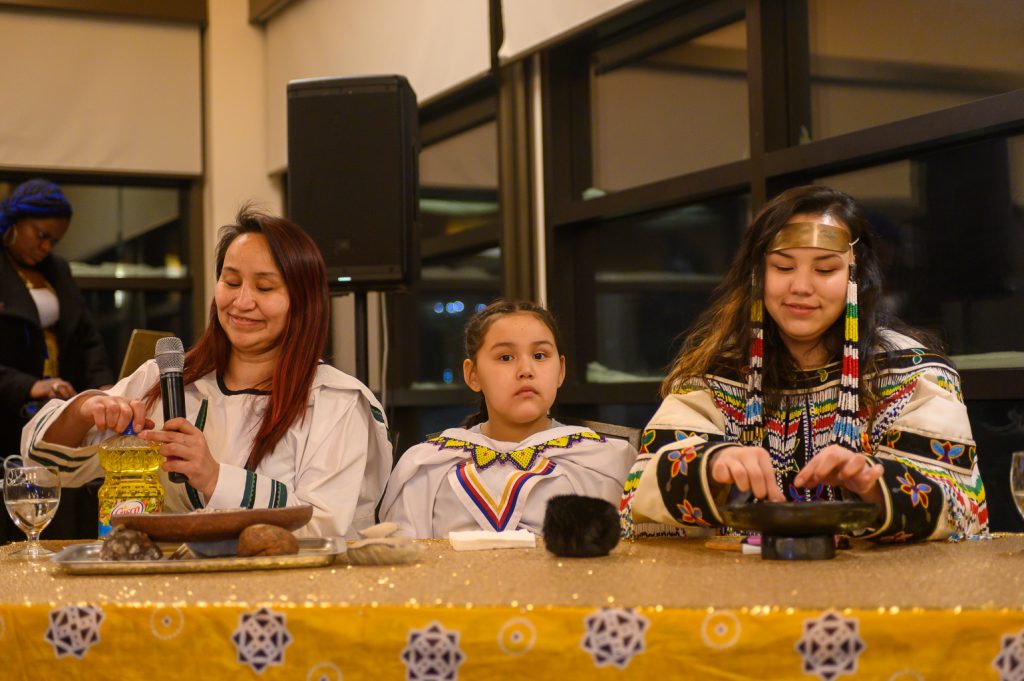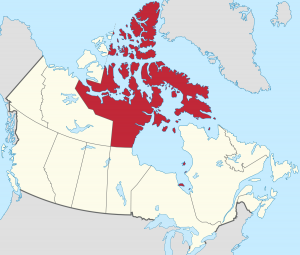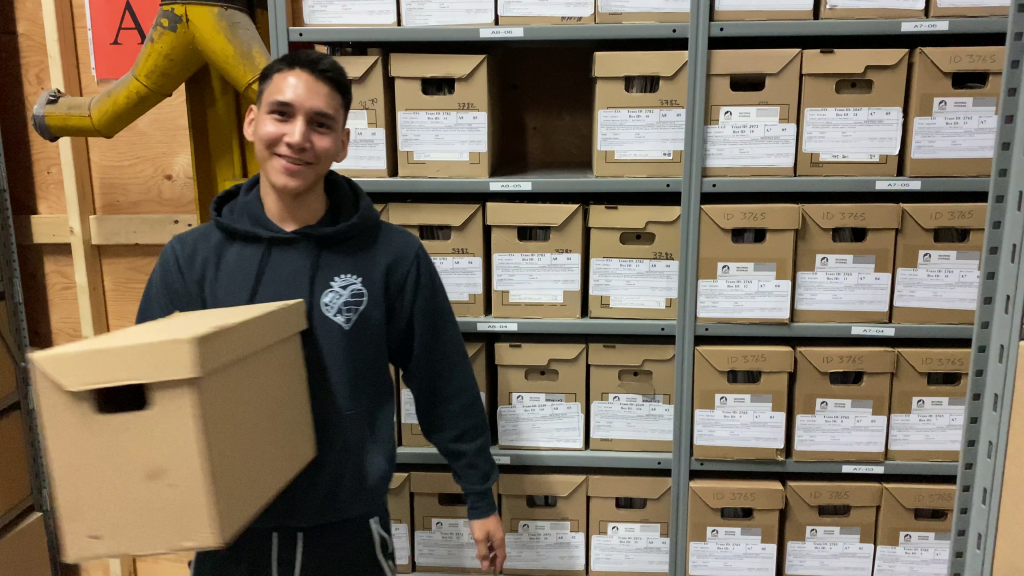
How an Inuit territory is staying connected despite vast distances apart
Winters aren’t just hard in Nunavut; they are severe. Temperatures can plunge to minus 45 degrees Celsius (minus 50 degrees Fahrenheit) in parts of Canada’s northernmost territory, some of which is located above the Arctic Circle. But the beauty is exquisite; views of the northern lights are spectacular there.
“It is one of the most exotic places in Canada, and the most natural,” Mary-Lee Sandy-Aliyak, a recruitment specialist with the Government of Nunavut, says of her territory.
“But it is also a challenging place to live. In addition to the weather, there are no roads or railroads between the 25 communities of this vast territory, one-fifth of Canada’s total land mass. Nunavut is only accessible by air, and during summer, by boat.”
Nunavut – which means “Our land” in Inuktitut, one of the Inuit languages, has been home to an indigenous population for more than 4,000 years. Today, more than 80% of the population is of Inuit descent.
And while the territory is huge, the population is not: 39,000 people. The smallest community is Grise Fiord, with 130; the largest, Iqaluit, the capital of Nunavut, has 8,500 people.
“There are not a lot of resources for fixing things,” says Sandy-Aliyak, whose job includes helping Inuit employees get training and education to advance their career. “You really have to be independent, whether you make your own clothes, service and fix your own house stuff. You have to know how to do maintenance on all of your things, whether it be the computer, the toaster, the fridge, vehicles – you name it.”
The COVID-19 pandemic could have resulted in an even more isolated way of life. But as countries around the world started to lock down last spring, the Government of Nunavut was gearing up to put Microsoft Teams into place for many of its 5,200-plus employees and additional support workers – scattered around the territory – providing a new way for them to meet virtually. Nunavut was also planning to use Teams as a tool to help government departments and agencies improve and deliver programs and services to remote communities throughout the territory.
Technologically, “we were once significantly behind, however as a result of recent events, we have come a long way,” says Dean Wells, corporate chief information officer for the Government of Nunavut.
“That is changing dramatically with the help of Teams and moving to the cloud with Office 365 and SharePoint online. It was something that was not possible until now because of bandwidth restrictions.”

Mary-Lee Sandy-Aliyak, far left, with her granddaughter, Tuuta, center, and her daughter, Kutsiq, at a past ceremony for the lighting of the qulliq, a traditional Inuit soapstone lamp. (Photo courtesy of Mary-Lee Sandy-Aliyak)
Sandy-Aliyak says Teams has been important to provide training that might not otherwise take place during the pandemic.

The territory of Nunavut. (Map courtesy of Government of Nunavut)
“Until the pandemic, some employees attending conferences often would have to fly within the territory to attend the gatherings, something that can be time-consuming and costly. For example, it’s nearly a three-hour plane ride from Grise Fiord to Iqaluit, and flights into some of the communities are weekly, not daily. All communities are quite spread out, and between each community, travel can be between $2,000 to $10,000 per person.”
She was part of a leadership course of 24 that originally met in person and moved to Teams because of the pandemic. Teams is also where the class graduation took place.
“It was nice to see everybody’s faces because we couldn’t see each other in person,” Sandy-Aliyak says.
In November 2019, the Government of Nunavut was hit by a ransomware attack that took down everything, from the phone system to the government’s servers. Following the attack, the government considered whether to rebuild the old network or move forward with something different.
“Microsoft was among the firms that helped with the restoration of systems,” says Wells. “The security provided by Microsoft was also crucial to the Government of Nunavut considering the impact of ransomware. When the government decided to move to the cloud, Microsoft became not only a contributor but a partner as well.”

Adam Guimond-Pishuktie, a records analyst, is using Microsoft Teams to learn Inuktitut, the first language of 70% of the residents of Nunavut. (Photo courtesy of Adam Guimond-Pishuktie)
Working together toward a common goal is important in Nunavut and part of Inuit culture. Taking care of each other and respect for Elders are key. Inuktitut, the first language of 70% of the residents of Nunavut, is integral to the teamwork and the traditional passing of knowledge. Adam Guimond-Pishuktie, a 19-year-old records analyst, grew up not knowing how to speak Inuktitut, and it bothered him.
“I have felt a little left out, but also kind of bad,” he says. “My friends can speak it to each other, but I don’t understand it, so it’s a language barrier – especially with the Elders. Whenever an Elder will come to me, to ask for help or whatever, I don’t speak the language, and I have to get someone else to translate.”
When a class to learn Inuktitut started being offered via Teams to government employees, Guimond-Pishuktie eagerly signed up.
“We have Teams meetings every week, and it helps a lot,” he says. “You can try to learn it online and try to understand the grammar yourself. But it’s a lot harder, you’re not understanding how to pronounce words. On Teams, the teachers are very helpful with that.”
Additional help is also now available: Microsoft recently added Inuktitut text translation to Microsoft Translator. The launch coincides with Inuktut Language Month in Nunavut. Inuktitut is the primary dialect of the Inuktut language. Other official languages and dialects used in the territory include English and French and Inuinnaqtun.
To add Inuktitut translation, Microsoft worked closely with the Government of Nunavut to get the language data needed to create the new translation system. The effort is part of Microsoft’s AI for Cultural Heritage program, in which $10 million over five years is committed to support projects dedicated to the preservation and enrichment of cultural heritage that leverage the power of artificial intelligence, such as the Inuktitut text translation.
In addition to Nunavut, Inuktitut is spoken across northern Canada including the Northwest Territories, Manitoba, Québec, and Newfoundland and Labrador. It is in the Eskimo-Aleut language family, which is spoken as far west as Russia, through Canada, and into eastern Greenland. Other languages in this family include Yup’ik, Aleut and Inuktun.
Wells sees that the ability of Teams to reach individuals not only during a pandemic, but at any time, is a huge plus for the people of Nunavut. Within the government, video conferencing can cut down travel expenses, reducing the number of flights, hotels and meals the government needs to pay for.

Public art in Iqaluit, the capital of Nunavut. (Photo courtesy of the Government of Nunavut)Using Teams, the Government of Nunavut can also reach subject matter experts and consultants outside of the territory more easily, paving the way for expanded possibilities in health, and for students to get tutoring and school courses through Teams.
“They’re getting tutoring when they can’t get additional help in the community, they can reach out and get one-on-one tutoring through Teams,” says Wells. “The discomfort and shyness that some students feel in a class – they’re afraid to put up their hands, they’re afraid to ask questions – you don’t get that with a one-on-one tutor in your home.”
Sandy-Aliyak has never been afraid to put up her hand, although she understands how others can feel that way. Athletic and adventurous, she was the youngest of five children, and “learned to be outgoing and not shy at all,” she says. Her avocation is as a stand-up comedian, and she says she’s mulling how she could use Teams for a comedy show, or as a way for comedians who are spread out to practice their routines together. It’s emblematic of how Teams capabilities can improve residents’ quality of life with training, employment, education and entertainment.
Wells says having Teams means a whole different world.
“Whoever’s got a PC now can really access Teams and go to work,” he says. “I don’t want to make it sound like we’ve got utopia built here because we don’t. There’s still a lot to do and a long way to grow in terms of internet service and connections in Nunavut. But there’s an awful lot of hope, and people are motivated now that they can see what’s possible. The quality of life is going to improve dramatically.”
Top photo: The northern lights over Nunavut. Photo courtesy of the Government of Nunavut.
